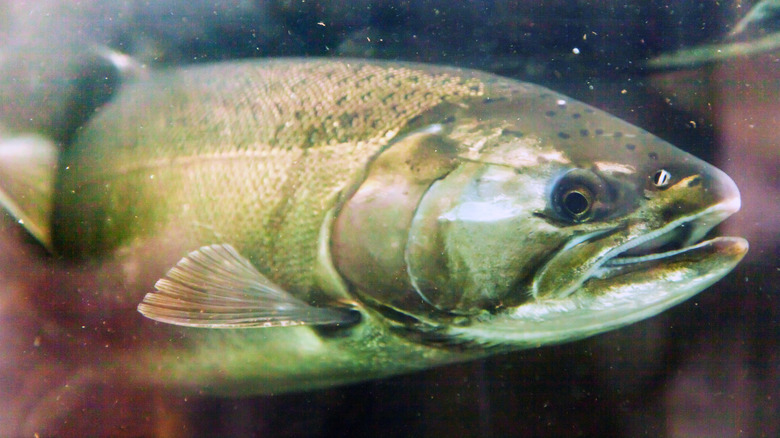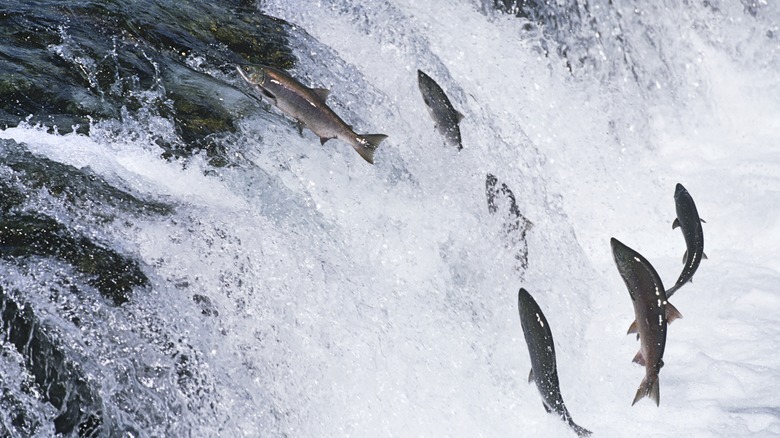The Reason Salmon Are Returning To CA For The First Time In Almost 25 Years
Californians welcomed the much-needed heavy rain and snow that came in October of last year as the state has been suffering through a drought that's lasted more than two decades (via the Los Angeles Times). California farmers provide over a third of the country's vegetables and two thirds of its nuts and fruits (via CDFA), but they weren't the only ones celebrating the return of the essential precipitation. Chinook and Coho salmon also celebrated the rain by returning to spawn in streams they haven't been able to access in years.
According to the U.S. Fish & Wildlife Service, Pacific salmon return to their "natal" or original home stream to spawn after spending years maturing in the ocean. They have the fascinating ability to remember and find their way back to their home stream to lay their eggs. When they travel from the sea to spawn, salmon will choose a stream with gravel to cover and protect their eggs with a steady water flow to provide oxygen.
The extreme drought conditions in California have caused many of these natal streams to run low or dry up, making it impossible for salmon to spawn in their preferred waterway and significantly decreasing population numbers (via The Daily Journal). This decrease prompted the California Fish & Wildlife Service to list Chinook salmon as "threatened" under the endangered species act in 1999.
Heavy rains restore streams where salmon spawn
Salmon that haven't been able to spawn in their natal streams can finally return thanks to heavy rainfall restoring parched waterways. For Pacific salmon near Northern California that migrate to freshwater streams from July to December and lay eggs from October to December (via CDFW), the record-high rainfall that fell in October came at just the right time.
Scientists believe that a salmon's natal stream carries a scent that guides the fish back to it when they are ready to spawn (per U.S. Fish & Wildlife Service). They are said to have the ability to detect a single drop of water from their home stream even when it is mixed into hundreds of gallons of seawater. The drought has caused these streams to dry up or be blocked by dams meant to conserve water, forcing salmon to spawn in areas where survival rates are lower.
Welcomed rain and snow have replenished salmon-preferred waterways and restored access to the small streams that give eggs and young salmon a chance at making it out to the ocean. The precipitation has also improved the flow of water that attracts salmon back to their natal stream to lay eggs of their own. According to The Guardian, salmon are returning to natal streams where they haven't been seen in over two decades, and if rainfall keeps up over the next few years, Pacific salmon are expected to make a strong comeback.

